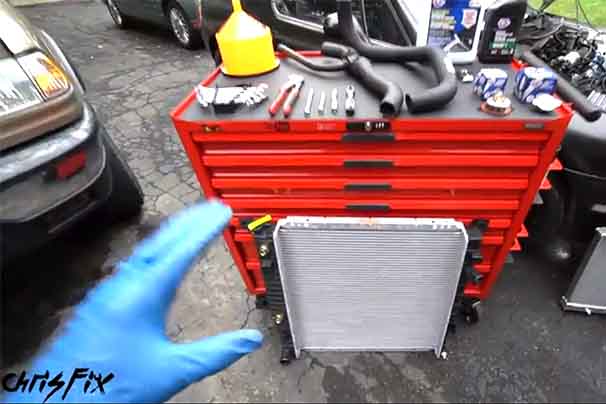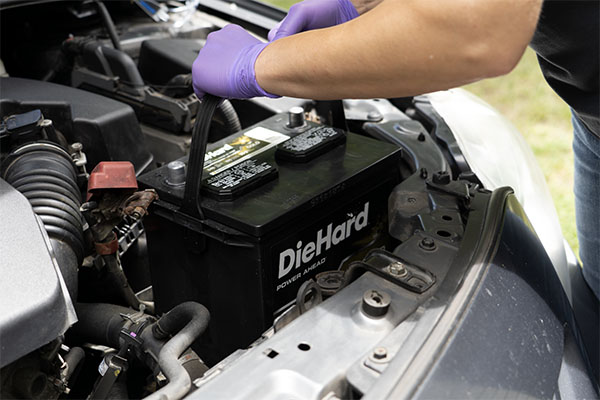
Source | Ron Lach
Even in our increasingly digital world, there are some books you should own at least one physical copy of – your favorite novel, photo books of milestone life moments, and your car owner's manual.
The internet offers endless information and opinions about cars, trucks, and SUVs. Yet vehicle manuals don't run on batteries and don't need Wi-Fi or mobile network connectivity. As a result, they are a very trustworthy source of repair, maintenance, and other how-tos for day-to-day car use. Especially when they are published or certified by your vehicle's manufacturer. Whether you are mechanically savvy or uncomfortable opening the car's hood, a vehicle manual can save you time, money, and stress.
Here are six reasons an owner's manual is a must-have for any car or truck owner and their family.
1. Maintenance Schedules
For many vehicles, manufacturers recommend changing the oil every seven thousand miles, rotating the tires on the same schedule, and replacing the automatic transmission fluid every fifty-thousand miles. Those are all "rules of thumb" from mechanics and other automotive specialists. Yet the needs of your vehicle might not align with these intervals.
Owner's manuals include maintenance schedules for you or an automotive service professional to complete over time. Keeping records of this information can be critical, especially if your vehicle needs major repairs within the manufacturer's warranty period. If a major warranty repair is required, you may need to show you have completed routine maintenance tasks.
An owner's manual maintenance schedule showing regular service visits and the corresponding paid work orders is generally the best evidence you can provide a dealer service center.
2. Replacement Parts
Suppose you have replaced your car's windshield wipers, your truck's tail light bulbs, or your electric vehicle's (EV) fuses. In that case, you will appreciate how many variants exist for different manufacturers, models, and model years. An owner's manual can take the guesswork and uncertainty out of which replacement part to buy, especially if you aren't mechanically or technically inclined.
It can be frustrating to purchase a replacement part and remove it from its packaging, only to find it isn't compatible with your vehicle. Following the car manufacturer's guidance in your owner's manual can mitigate the need to return or exchange parts.
Using the wrong original equipment manufacturer (OEM) or aftermarket parts could mean the part won't fit or work at all. Or worse yet, it could seem to work but adversely impact your vehicle's performance and lead to more serious repairs down the road.
3. Build Confidence When Servicing or Troubleshooting Your Vehicle
Have you ever driven along a highway, and an unfamiliar icon lights up on your dashboard? Does taking your SUV to your local repair shop send chills down your spine?
Reading your car maintenance owner's manual can help you recognize what a dashboard icon or trouble light represents and how to remedy the situation. It can also help you identify the cause of an unexpected noise or when your vehicle doesn't feel or even smell like it should.
A little repair manual research can build confidence when speaking to a service advisor, mechanic, or even a friend or family member. It also helps you navigate which replacement parts (like filters or gaskets) you need at a given time and when you can save your money.
A dashboard symbol may signify you simply need to increase your tire pressure, adjust your gas cap, or change your fluids. If parts need to be replaced, your owner's manual can align common symptoms to the corresponding vehicle components like brake calipers, rotors, or drums.

Source | Ivan Samkov
4. Checking, Changing, and Adding Fluids
Does your vehicle use 5W-30 or 10W-40 oil? Should you be using synthetic oil on your high-mileage vehicle? How much motor oil or transmission fluid does your car or truck require? Where are the dipsticks, reservoir caps, and fluid containers around the engine?
Before you pop your hood, you should review where every fluid type is located and the types of fluids your vehicle needs for optimal performance.
5. Need Help Navigating the Interior of Your Vehicle?
You slide behind the wheel on a cold winter day, the morning after your spouse or teenager borrowed your "new-to-you" car for the first time. Your seat position, infotainment system, climate settings, and mirrors have all been changed from what you are used to.
If you have your owner's manual handy, you can likely set everything back to how you like them and save time for a coffee along your commute. Without one, you might struggle to set things right or face a long, uncomfortable ride to work.
6. Safely Install Vehicle Add-Ons
Whether you are a boating enthusiast, a new parent, or an avid camper and cyclist, safely installing accessories, like trailer hitches, child seats, and bicycle racks, is critical. Exceeding your car's manufacturer-recommended capacity can not only harm your vehicle but it can also jeopardize others around you.
Most owner's manuals will include important information about your vehicle's towing capacity and instructions on installing car seats and racking on your vehicle safely.
Have you purchased an older car, truck, or SUV and can't find the vehicle manual? Are you maintaining a cherished family SUV, classic muscle car, or work truck and need to get the right parts, accessories, and fluids fast?
The Advance Auto Parts online store can guide you to just what you need for your vehicle, including the project guides you need and mechanical advice you can trust. Or visit us in store and talk to one of our knowledgeable Team Members.
Let's hear from you: Do you know where to find your vehicle manual? Is it hidden under a pile of old maps and napkins or easily accessible for quick reference?







